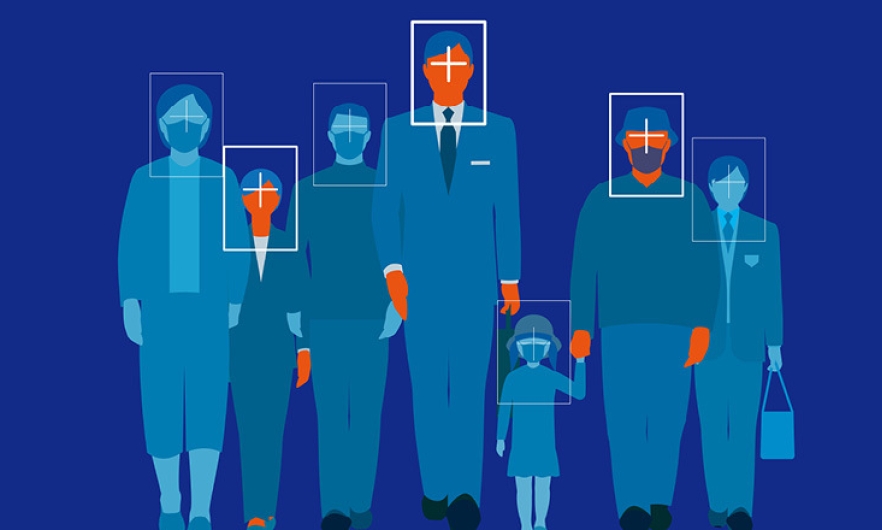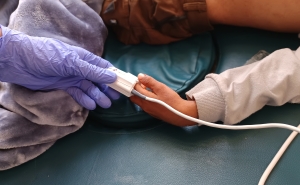COVID-19 Testing: Understanding the “Percent Positive”

As COVID-19 outbreaks continue to flare up across the U.S., the need for coronavirus testing remains urgent.
Individuals rely on test results to guide their medical treatment and decisions on whether to self-isolate. Public health officials rely on the results to track the state of the pandemic, and policymakers use this information to guide decisions on reopening schools and businesses.
One number—the “percent positive”—is often cited in these decisions. In this Q&A, Epidemiology faculty David Dowdy, MD, PhD ’08, ScM ’02, and Gypsyamber D’Souza, PhD ’07, MPH, MS, explain what this term means and why it matters.
What is the “percent positive” and why does it matter?
The percent positive is exactly what it sounds like: the percentage of all coronavirus tests performed that are actually positive, or: (positive tests)/(total tests) x 100%. The percent positive (sometimes called the “percent positive rate” or “positivity rate”) helps public health officials answer questions such as:
- What is the current level of SARS-CoV-2 (coronavirus) transmission in the community?
- Are we doing enough testing for the amount of people who are getting infected?
The percent positive will be high if the number of positive tests is too high, or if the number of total tests is too low. A higher percent positive suggests higher transmission and that there are likely more people with coronavirus in the community who haven’t been tested yet.
The percent positive is a critical measure because it gives us an indication how widespread infection is in the area where the testing is occurring—and whether levels of testing are keeping up with levels of disease transmission.
What does a high percent positive mean?
A high percent positive means that more testing should probably be done—and it suggests that it is not a good time to relax restrictions aimed at reducing coronavirus transmission. Because a high percentage of positive tests suggests high coronavirus infection rates (due to high transmission in the community), a high percent positive can indicate it may be a good time to add restrictions to slow the spread of disease.
How high is too high?
The higher the percent positive is, the more concerning it is. As a rule of thumb, however, one threshold for the percent positive being “too high” is 5%. For example, the World Health Organization recommended in May that the percent positive remain below 5% for at least two weeks before governments consider reopening. If we are successful in bringing coronavirus transmission under control, this threshold might be lowered over time. To further relax social restrictions and allow very large gatherings or meetings of people traveling from many different areas, for example, we would want a lower threshold.
As of July 2020, some countries (for example, Australia, South Korea, and Uruguay) and U.S. states (for example, New York, Maine, and Connecticut) were well below the 5% threshold, with 1% of tests or fewer being positive—while other countries (for example, Mexico and Nigeria) and states (for example, Mississippi, Nevada, and Florida) had percent positive levels higher than 15%, far above this cutoff. (See Becker’s Hospital Review and the Johns Hopkins Testing Tracker.)
Does a low percent positive mean that a population has herd immunity?
No. A low percent positive simply means that the level of coronavirus transmission, relative to the amount of testing, is low at this point in time.
As of July 2020, it is unlikely any country (or U.S. state) is close to achieving herd immunity. Places that have low percent positive levels have gotten there by reducing levels of coronavirus transmission through policies restricting social contact, aggressive testing and isolation, and the actions of everyday people to maintain distance. But even in these places, the vast majority of the population is still vulnerable to getting COVID-19.
In the future, if populations begin to develop herd immunity (for example, through widespread vaccination), the level of coronavirus transmission will fall—which will also cause the percent positive to fall. But just because a place has a low percent positive now does not mean that it has achieved herd immunity. In fact, some of the places with the lowest percent positive (for example, in New Zealand, where an outbreak has not yet occurred) are likely to have the least amount of population immunity. These places will still be able to achieve herd immunity through mass vaccination when a vaccine becomes available.
How can we reduce the percent positive when it is too high?
Simply put, there are two ways to lower the percent positive: Reduce the amount of coronavirus transmission or increase the number of people who get tested. Fortunately, these two things often go hand-in-hand. If a place is doing more testing—and responding appropriately to positive tests, by making sure that people who might be contagious are isolated, for example—the amount of transmission should go down over time. But even without testing, measures such as stricter regulations regarding wearing masks, physical distancing, and avoiding large gatherings are all effective ways to reduce transmission.
Why does more testing help?
When there is not enough testing in an area, people who are infected with coronavirus don’t get counted, and they don’t know to isolate themselves. As a result, these people can spread the coronavirus and cause disease in their communities.
People who test positive for the coronavirus (and those exposed to them) should isolate themselves for two weeks, and contact tracing should be done to prevent the infection from spreading. Without enough testing, the coronavirus spreads “silently”. By the time severe cases begin to surge in hospitals, outbreaks are larger and much harder to control. These outbreaks can be detected earlier—and their severity lessened—by testing more people.
But for testing to work, people need to get test results quickly. When people have to wait many days to get their results back, they may be less likely to keep themselves isolated. By the time a positive test result comes back, therefore, someone who has been waiting many days may have infected more people.
While tracking the number of positive tests is useful, what matters more is the total number of people who are infected—and we can only know this number by testing more people. As more people are tested, the percent positive will go down.
What should I do if I’m in a place with a high percent positive?
Since this means that the level of coronavirus transmission in your area is likely still high, you should be very careful about wearing masks, washing your hands, maintaining physical distance, and avoiding situations that may put you at risk for getting infected or infecting others (which you could do if you’re infected but don’t know it). You should also consider getting tested if you have any symptoms, or if you have not been distancing and are likely to be in contact with people who are at risk of getting very sick if they develop COVID-19.
If I’m in a place with a low percent positive, does this mean I’m immune?
No. All this means is that coronavirus transmission, relative to testing, is low in your setting at the moment. This usually means that the risk of getting COVID-19 in your area is lower at this time, but it’s important to remember that coronavirus transmission can increase again at any time. Also, a lower percent positive does not mean there is herd immunity. We all need to keep our guard up if we want to keep transmission levels low—which is what needs to happen if we want to get back to our normal activities again.
David Dowdy is an associate professor and Gypsyamber D’Souza is a professor in Epidemiology at the Bloomberg School.





